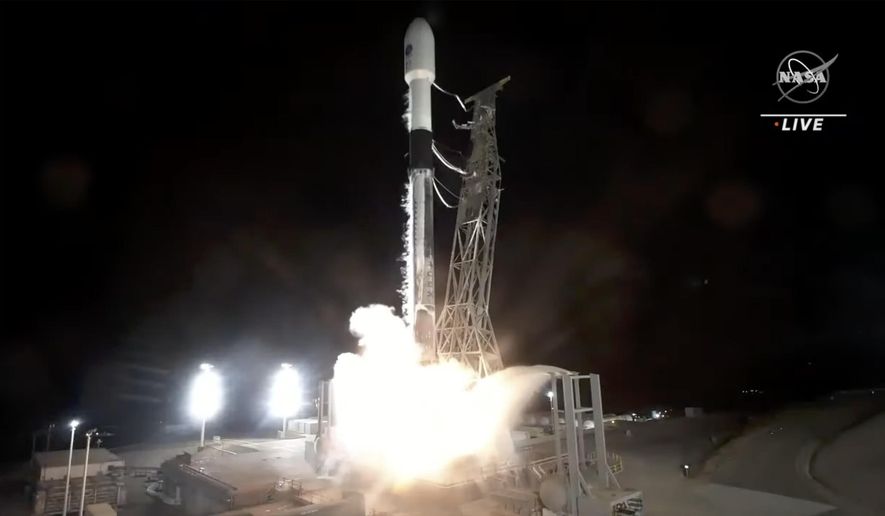A U.S.-French satellite that will map almost all of the world’s oceans, lakes and rivers rocketed into orbit Friday.
The predawn launch aboard a SpaceX rocket from Vandenberg Space Force Base in California capped a highly successful year for NASA.
Nicknamed SWOT — short for Surface Water and Ocean Topography — the satellite is needed more than ever as climate change worsens droughts, flooding and coastal erosion, according to scientists.
“We’re going to be able to see things that we could just not see before … and really understand where water is at any given time,” said Benjamin Hamlington at NASA’s Jet Propulsion Laboratory in Pasadena, California.
About the size of an SUV, the satellite will measure the height of water on more than 90% of Earth’s surface, allowing scientists to track the flow and identify potential high-risk areas. It will also survey millions of lakes as well as 1.3 million miles (2.1 million kilometers) of rivers, from headwater to mouth.
The satellite will shoot radar pulses at Earth, with the signals bouncing back to be received by a pair of antennas, one on each end of a 33-foot (10-meter) boom.
It should be able to make out currents and eddies less than 13 miles (21 kilometers) across, as well as areas of the ocean where water masses of varying temperatures merge.
NASA’s current fleet of nearly 30 Earth-observing satellites cannot make out such slight features. And while these older satellites can map the extent of lakes and rivers, their measurements are not as detailed, said the University of North Carolina’s Tamlin Pavelsky, who is part of the mission.
Perhaps most importantly, the satellite will reveal the location and speed of rising sea levels and the shift of coastlines, key to saving lives and property. It will cover the globe between the Arctic and Antarctica at least once every three weeks, as it orbits more than 550 miles (890 kilometers) high. The mission is expected to last three years.
NASA and the French Space Agency collaborated on the $1.2 billion project, with Britain and Canada chipping in.
“What a spectacular, truly spectacular, launch,” said NASA program manager Nadya Vinogradova-Shiffer. “It is a pivotal moment, and I’m very excited about it.”
Already recycled, the first-stage booster returned to Vandenberg eight minutes after liftoff to fly again one day.
It’s the latest milestone this year for NASA. Among the other highlights: glamour shots of the universe from the new Webb Space Telescope; the Dart spacecraft’s dead-on slam into an asteroid in the first planetary defense test; and the Orion capsule’s recent return from the moon following a test flight.
___
The Associated Press Health and Science Department receives support from the Howard Hughes Medical Institute’s Science and Educational Media Group. The AP is solely responsible for all content.




Please read our comment policy before commenting.